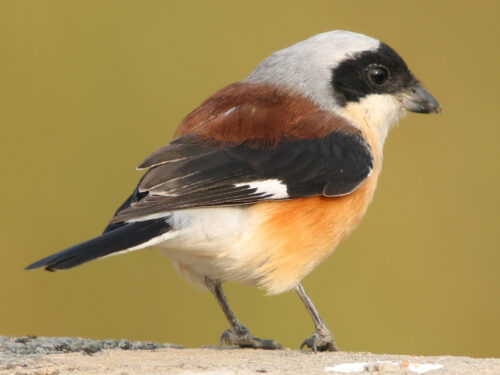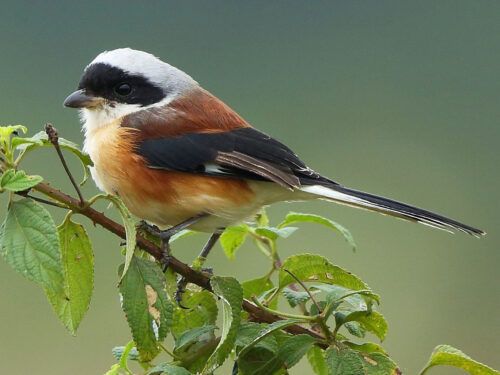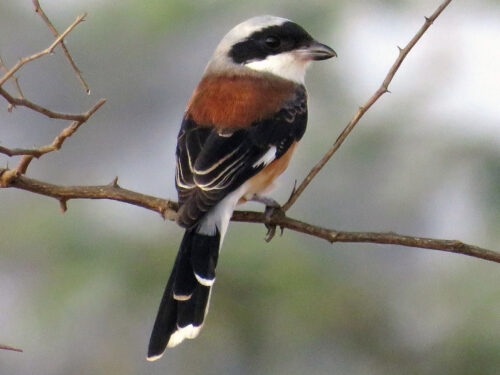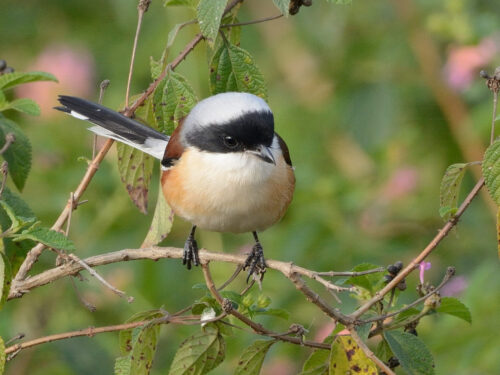
Bay-backed Shrikes: Nature’s Perfect Combination of Beauty and Brains
The bay-backed shrike, scientifically known as Lanius vittatus, is a fascinating avian species that captivates bird enthusiasts with its distinctive appearance and intriguing behavior.
With its bay-colored back and striking black mask, this medium-sized passerine bird presents a visually stunning spectacle.
Let’s delve into the unique characteristics, habitat, hunting techniques, breeding habits, and exceptional parenting skills of this remarkable bird.
Native to South Asia, the bay-backed shrike thrives in a diverse range of habitats, including open woodlands, scrublands, grasslands, and agricultural areas.
This adaptability allows the species to flourish across various regions, from the Indian subcontinent to parts of Southeast Asia.
However, they tend to favor areas with scattered trees and shrubs, as these provide suitable perches for hunting and nesting.

The bay-backed shrike derives its name from the striking feature that sets it apart: a distinctive bay-colored back.
Males and females share similar features, making it challenging to discern between the two based on physical characteristics alone.
With a prominent black mask extending from the bill to the eyes and contrasting black primaries and secondaries on its wings, the bay-backed shrike presents an exquisite touch to its overall appearance.
As primarily insectivorous creatures, bay-backed shrikes display remarkable hunting techniques.
Perched atop elevated branches or wires, they skillfully scan their surroundings for potential prey.
Once a target is detected, these adept hunters swoop down swiftly to catch insects in mid-flight.
Their diet comprises a wide array of insects, including beetles, grasshoppers, dragonflies, and butterflies.
Additionally, small vertebrates like lizards and even small birds occasionally find themselves on the menu of these resourceful hunters.

Breeding among bay-backed shrikes typically occurs during the spring and summer months. Males engage in elaborate courtship displays to attract potential mates.
These displays often involve singing melodious songs while fluttering their wings and puffing up their plumage.
Once a pair is formed, they construct a sturdy nest made of twigs, grass, and roots, meticulously weaving them together to form a cup-shaped structure.
This well-constructed nest is usually situated in the fork of a tree or concealed within dense vegetation to ensure the safety of the eggs and hatchlings.
The bay-backed shrike is known for its exceptional parenting skills.
After mating, the female lays a clutch of eggs, usually numbering between three to five.
Both parents diligently take turns incubating the eggs, with an average incubation period of around 16 to 18 days.

Once the eggs hatch, the parents work in unison to provide nourishment and protection to their young.
This harmonious collaboration ensures the survival and well-being of the offspring, allowing them to grow and develop under the watchful eyes of their attentive parents.
In conclusion, the bay-backed shrike is a truly remarkable bird that combines beauty and brains.
Its distinctive appearance, including the bay-colored back and black mask, makes it visually striking. Its adaptability to various habitats allows it to thrive across South Asia.
With exceptional hunting techniques, the bay-backed shrike skillfully catches insects and occasionally preys on small vertebrates.
Its breeding habits involve elaborate courtship displays and collaborative parenting efforts.
Truly, the bay-backed shrike exemplifies nature’s perfect combination of beauty and intelligence.
Video:






